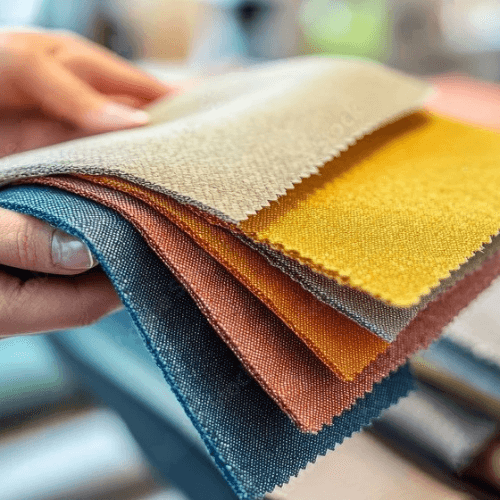How Cultural Trends Influence Fabric Choices Worldwide

Cultural trends play a pivotal role in shaping fabric choices and fashion design across the globe. As societies evolve, so do their preferences for materials, patterns, and styles, reflecting deeper values, traditions, and identities. This blog explores how various cultural influences impact fabric choices worldwide, highlighting the interplay between heritage, sustainability, and globalization.
### 1. **Cultural Heritage and Traditional Fabrics
Cultural heritage significantly influences fabric choices, as traditional textiles often embody the history and craftsmanship of a region. For example:
– **Silk in China:** China’s long-standing tradition of silk production has made silk a central element in Chinese fashion. The luxurious feel and historical significance of silk continue to attract consumers both domestically and internationally.
– **Ankara Prints in Africa:** African textiles are renowned for their vibrant colors and intricate patterns. Fabrics like Ankara not only reflect the continent’s rich cultural heritage but also serve as a means of expression for identity and community.
– **Saris in India:** The sari is more than just clothing; it represents a rich tapestry of Indian culture. The diverse regional variations in sari designs showcase local traditions and craftsmanship, influencing fabric choices among consumers seeking authenticity.
These traditional fabrics are often celebrated for their unique qualities and cultural significance, making them popular choices among designers looking to incorporate heritage into modern fashion.
### 2. **Sustainability and Ethical Considerations
As global awareness of environmental issues rises, consumers are increasingly drawn to fabrics that align with sustainable practices. Cultural trends around sustainability influence fabric choices in several ways:
– **Natural Fibers:** Many cultures emphasize the use of natural materials that are biodegradable and eco-friendly. For example, organic cotton and linen are gaining popularity as consumers seek alternatives to synthetic fabrics that harm the environment.
– **Revival of Indigenous Techniques:** There is a growing movement to revive traditional textile techniques that prioritize sustainability. Indigenous communities worldwide are reclaiming their heritage by using age-old methods to create textiles that respect both people and the planet.
– **Cultural Appropriation Awareness:** As consumers become more conscious of cultural appropriation, brands are encouraged to source materials ethically and collaborate with local artisans. This shift promotes respect for cultural practices while supporting sustainable livelihoods.
### 3. **Globalization and Cross-Cultural Influences
Globalization has facilitated cross-cultural exchanges that significantly impact fabric choices:
– **Fusion of Styles:** Designers increasingly draw inspiration from various cultures, leading to innovative combinations of traditional elements with contemporary designs. This fusion creates unique textiles that appeal to a diverse audience.
– **Influence of Social Media:** Platforms like Instagram and TikTok have accelerated the spread of fashion trends across borders. Consumers are exposed to global styles, prompting them to seek fabrics that reflect international influences while maintaining their cultural roots.
– **Western Influence on Traditional Attire:** Traditional garments are being reinterpreted for modern markets. For instance, the Japanese kimono has influenced contemporary streetwear designs, showcasing how cultural elements can evolve while remaining relevant.
### 4. **Fashion as Cultural Identity
Fashion serves as a powerful medium for expressing cultural identity:
– **Cultural Symbols in Textiles:** Many fabrics incorporate symbols or patterns that hold cultural significance. For example, motifs used in African textiles often tell stories or convey messages important to specific communities.
– **Garments as Statements:** Clothing choices can reflect social norms, political movements, or personal beliefs. For instance, modest fashion trends emerging from Middle Eastern cultures have gained popularity globally, challenging conventional beauty standards while promoting cultural values.
– **Celebration of Diversity:** As consumers embrace diversity in fashion, there is a growing appreciation for textiles that celebrate different cultures. This trend encourages designers to explore unique materials and designs that honor various heritages.
### 5. **Economic Factors Influencing Fabric Choices
Economic conditions also play a role in shaping fabric preferences:
– **Affordability vs. Luxury:** In emerging markets, consumers may prioritize affordability over luxury when selecting fabrics. Conversely, affluent markets tend to favor high-quality materials that signify status.
– **Local Production vs. Global Sourcing:** Economic shifts can influence whether consumers prefer locally produced textiles or globally sourced fabrics. Support for local artisans is often emphasized during economic downturns as communities seek to bolster local economies.
### Conclusion
Cultural trends profoundly influence fabric choices worldwide by intertwining heritage with modern values such as sustainability and globalization. As consumers become more aware of their impact on the environment and society, they increasingly seek textiles that reflect their identities while supporting ethical practices.
Designers who understand these cultural influences can create innovative collections that resonate with diverse audiences while honoring traditions. By embracing the rich tapestry of global cultures in their fabric choices, the textile industry can continue to evolve in meaningful ways that celebrate both individuality and shared heritage.






